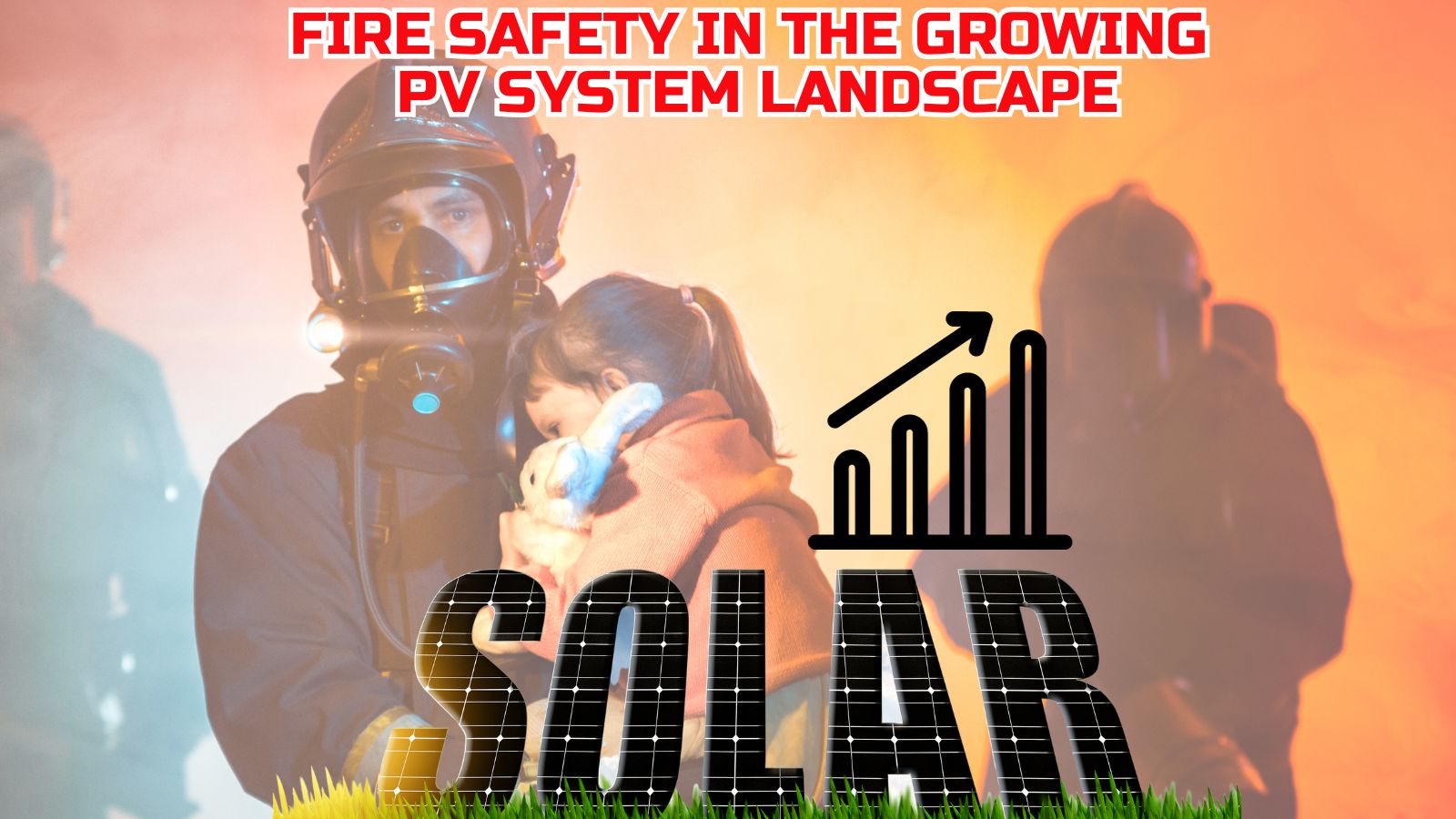Navigating the Rising Concerns: Fire Safety in the Growing PV System Landscape
PV Solar Safety – Risk and Solutions for First Responders 5 December’23 09H00 SouthAfrican Time
The world of solar energy is undergoing a transformative surge, exemplified by the rooftop solar PV capacity in South Africa experiencing an extraordinary 349% increase in just over a year. Anton Eberhard, a prominent South African energy expert, has highlighted this significant growth, emphasizing the need for heightened awareness and stringent safety measures.
Unveiling the Numbers: A Sharp Rise in PV Fires
Despite a 10.5% growth in solar capacity from 2019 to 2022, a concerning trend emerges – a worldwide percentage of nearly 50% surge in solar panel-related fires during the same period. This alarming statistic raises crucial questions about the overall safety of PV installations, particularly as the market saw an influx of untrained companies turned solar installers due to soaring demand.
The Root of the Issue: Untrained Installers and Subpar Workmanship
The rapid expansion of the solar market has led to an influx of untrained companies entering the field. With demand outpacing supply, corners were cut, resulting in improper tool usage, incorrect components and wiring, and subpar workmanship. The repercussions of this trend are far-reaching, creating a long list of potential hazards.
Understanding the Fire Risk Landscape
Each PV installation becomes an integral part of any potential fire incident, necessitating a comprehensive evaluation of potential risks. With a conservative fire risk rate of 0.01%, the looming question is how many fire incidents might unfold in 2024.
The Unseen Threat: DC Danger Zones and First Responder Challenges
Amid this rising concern, a significant challenge arises for first responders. A 5% prevalence of homes and businesses equipped with PV installations magnifies the risk. First responders, trained to combat fires aggressively, face delays due to the inherent dangers associated with DC danger zones, potentially leading to electrocution.
Critical Seconds: The Thin Line Between Control and Catastrophe
The urgency of the matter lies in the critical seconds that can make all the difference between successfully controlling a fire and facing total destruction. The complexity of PV systems, coupled with the lack of expertise during emergency situations, creates a challenging scenario for first responders.
A Call for Vigilance and Expertise
As we witness the rapid expansion of solar energy, it is imperative to prioritize fire safety in PV systems. Ensuring proper training, adherence to safety standards, and the implementation of robust emergency protocols can mitigate the risks associated with the growing number of PV installations. The potential consequences of overlooking this issue are too severe to ignore, emphasizing the need for a collective effort to navigate these challenges and secure a safer energy future.
Introducing PVSTOP: A Solution for Safe De-Energizing
In the face of these challenges, a crucial solution emerges – PVSTOP. This innovative system enables easy and effective de-energizing of PV systems, especially crucial in cases where fires are initiated by DC arcs within the system. De-energizing the PV system simplifies firefighting efforts by eliminating the presence of the DC arc that can reignite flames persistently.
The high temperatures associated with DC arcs pose a significant risk, and attempting to extinguish fires without proper de-energization can result in water damage and a heightened risk of electrocution. Untrained individuals should never attempt this, even with correct safety wear. For first responders, PVSTOP provides a safer and more efficient means of handling PV-related fire incidents, ensuring that critical seconds are maximized for effective intervention.
As we navigate the challenges posed by the growth in PV systems, integrating solutions like PVSTOP becomes paramount. It’s not just about expanding our energy capabilities; it’s about doing so responsibly, with an unwavering commitment to safety, expertise, and a collective effort to secure a resilient and secure energy future.

